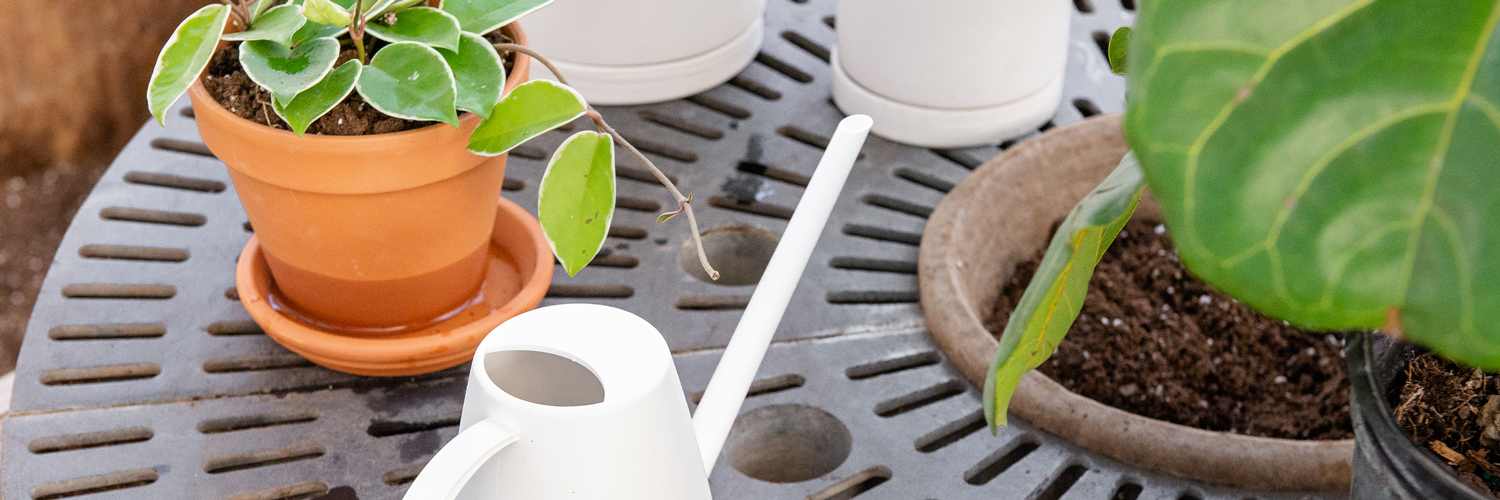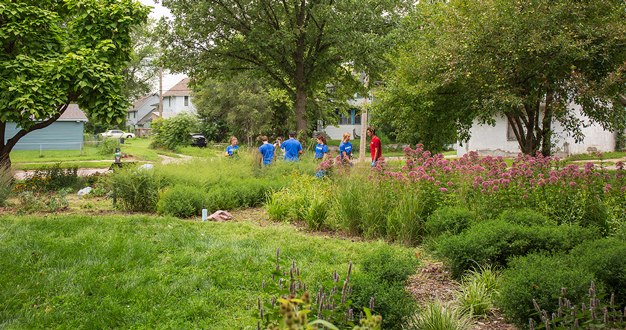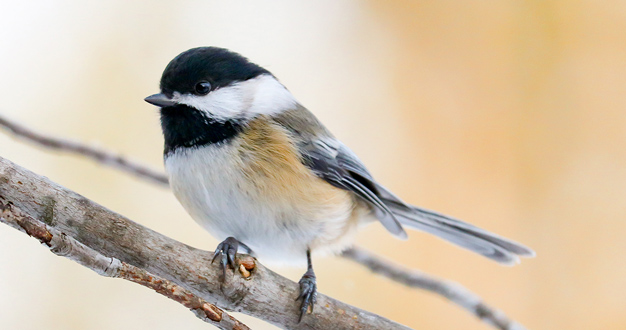
If you’re the steward of an expanding collection of houseplants, you know watering is an important task on your weekly to-do list. And chances are, you’ve developed a system for getting that task accomplished in a way that suits both you and your plant family. But if you’re new to plant parenthood – or just looking for fresh ideas to make watering easier and more effective – we have a few tips of our own. After all, watering plants is kind of our thing around here. And we love talking plants and sharing our experience with you.
Tip #1: Water Slowly + Evenly
Imagine you ask for a drink and someone tosses a glassful of water in your face. You wouldn’t appreciate it, and neither do your houseplants. When you water, it’s a good idea to use a watering can with a small spout, letting the water trickle out gently so the potting mix doesn’t get disrupted. Then, move the spout slowly around the potting mix, visiting all areas as you go – from the center of the pot to the outside edges – until all of the potting mix is evenly moistened and you begin to see the excess drain from the bottom.

Tip #2: Use a Soil Probe
Often, you’ll see watering instructions for a plant that say something like “let the top two inches dry before watering thoroughly.” The challenge is that, unless the pot is made of glass, you can’t see all the potting mix inside of it – and poking your finger around in the soil can be messy and a bit disruptive for the plant. If you have a plant that’s picky about soil moisture, consider using a soil probe instead. A simple soil probe is a slender rod with notches at one-inch intervals. When you carefully stick the probe down into the soil and pull it out, each notch grabs a tiny soil sample for you to inspect. You’ll be able to see exactly how far down the potting mix is moistened and know when it’s time to water.
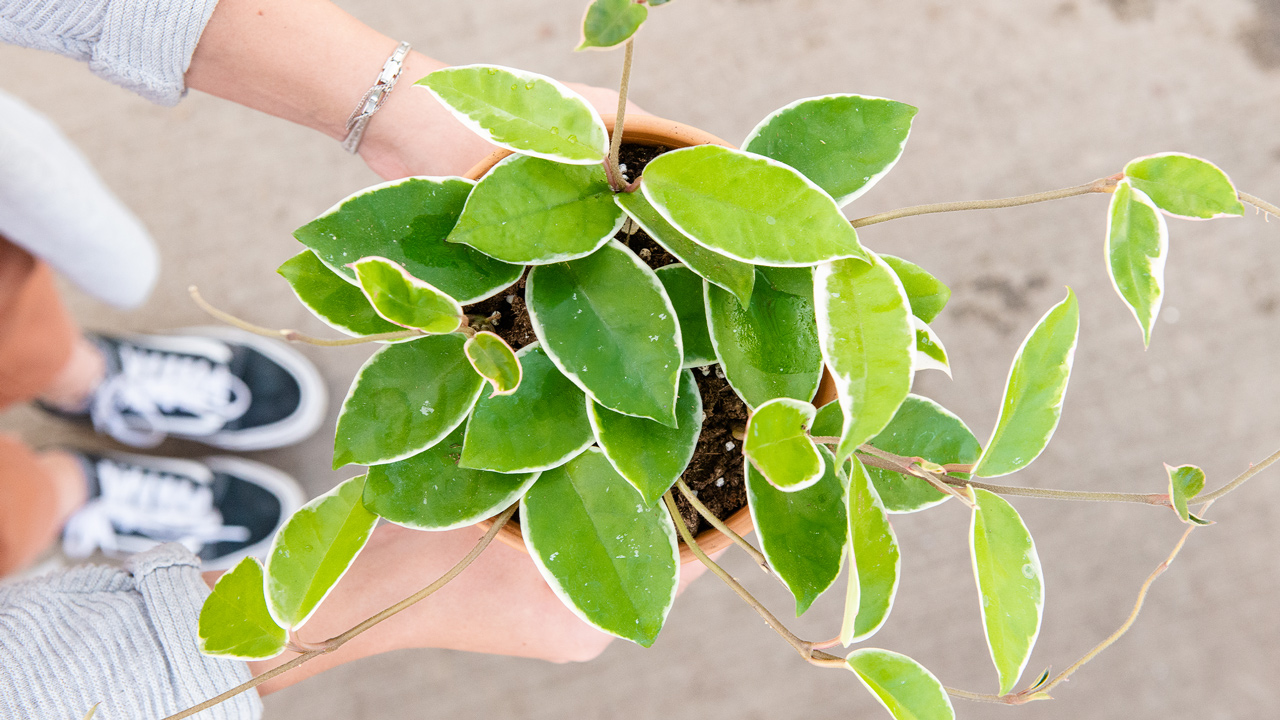
Tip #3: Water by Weight
The next time you give your plant a good watering – and all the potting mix is thoroughly moistened – take a minute to lift up your plant by the pot. Note how heavy it feels in your hand. As time passes, lift the plant every couple of days and notice how it gets lighter and lighter as the plant uses up the water in the soil. Eventually, you’ll be able to tell when a plant needs water just by lifting it. Some plants like to be dry, some like consistently moistened soil – over time, you’ll figure out the ideal “I need a drink” weight for each of your plants.
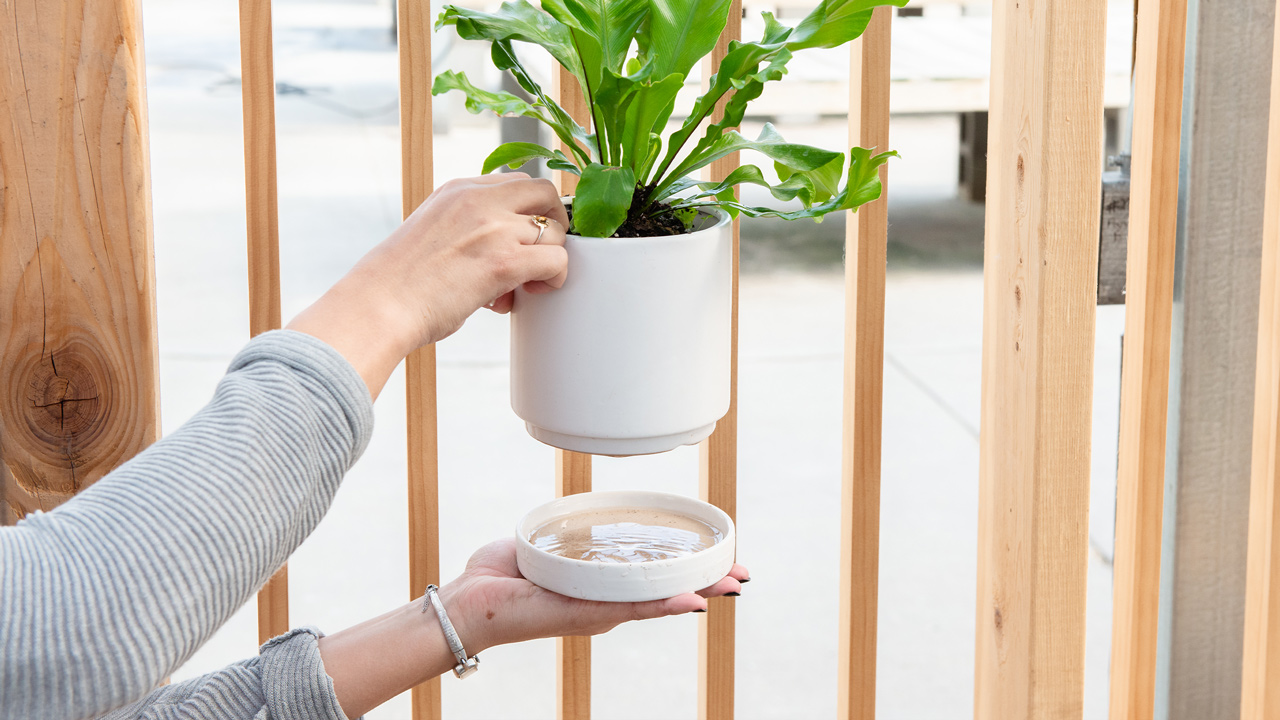
Tip #4: Remove the Excess Water
It’s a good idea to water your plant until the excess drains out the drain holes, right? That’s easy to do with small plants we can carry to the sink. But if your plant is a big, beautiful monstera in a fourteen-inch pot with those leaves going every which way, moving the plant for every watering isn’t practical. You probably have a saucer underneath to collect excess water, but most plants don’t like sitting in it for too long, so what do you do? Grab a baster – just like the one you use on the Thanksgiving turkey – and use it to suck the water out of the tray.
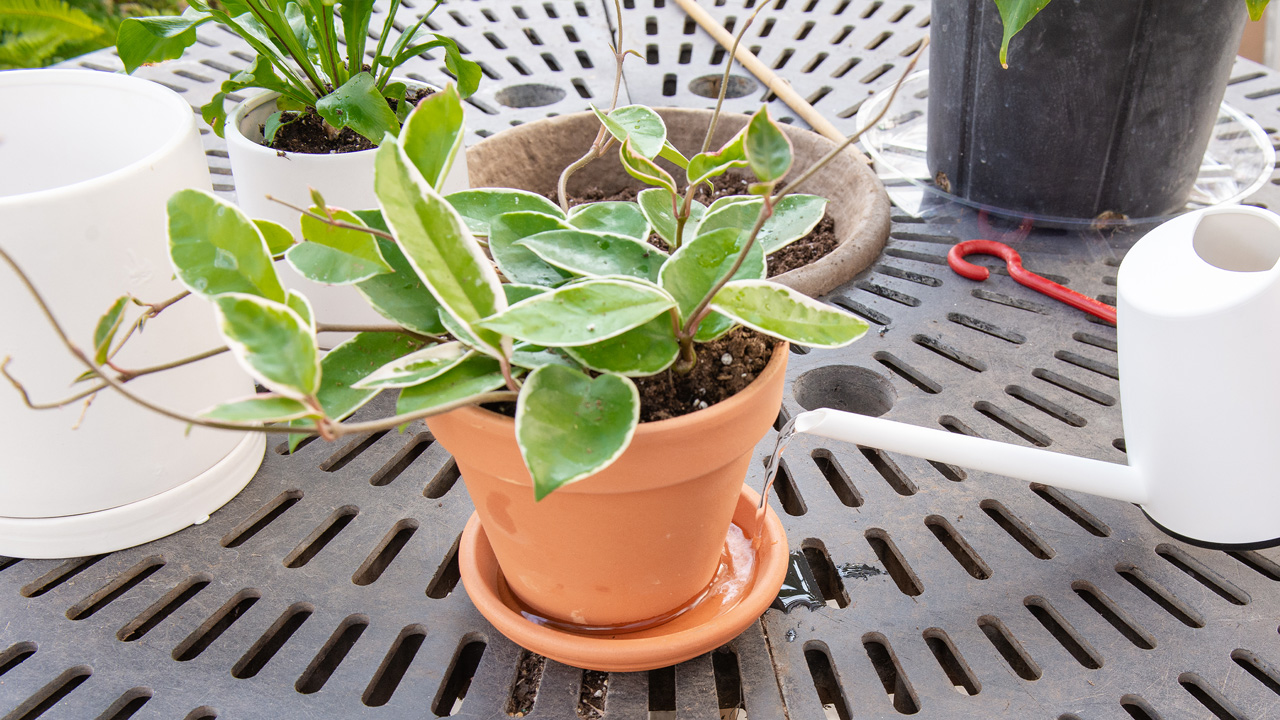
Tip #5: Consider Watering from the Bottom
It may seem backwards, but one of the best ways to water a houseplant is by letting it soak up water from the bottom. This is especially true if you’re a plant parent who tends to let things dry out between drinks. When a peat moss-based potting mix dries out, it can have a hard time absorbing water again. In this situation, when you water from the top, you may see water coming out of the drain holes and assume you’ve watered enough. But in reality, the water may be simply running over the soil and down the inside of the pot without soaking in. Portions of the root system may never see a drop.
A great way to ensure that all the roots get a thorough drink is by watering from the bottom. An easy way to do this is to fill your sink or bathtub with about three inches of tepid water. Set your plants in the water and give them a half an hour or so to soak it up. Then, drain the tub and let the plants drain thoroughly too before putting them back in their spots. But be sure not to leave your plants in the tub of water for too long – any longer than an hour may lead to root rot.
Tip #6: Aerate the Potting Mix
Over time, as we water our plants, the potting mix will begin to settle. This collapses all the valuable air pockets within the mix and prevents roots from healthy exchange with the outside air. It’s easy to remedy – a simple skewer, chopstick, or slender dowel is all you need. Every third or fourth watering, gently poke a few holes here and there in the soil around the plant, as far down as you can. The resulting holes will let air penetrate deep into the root system and allow water to filter through evenly too.
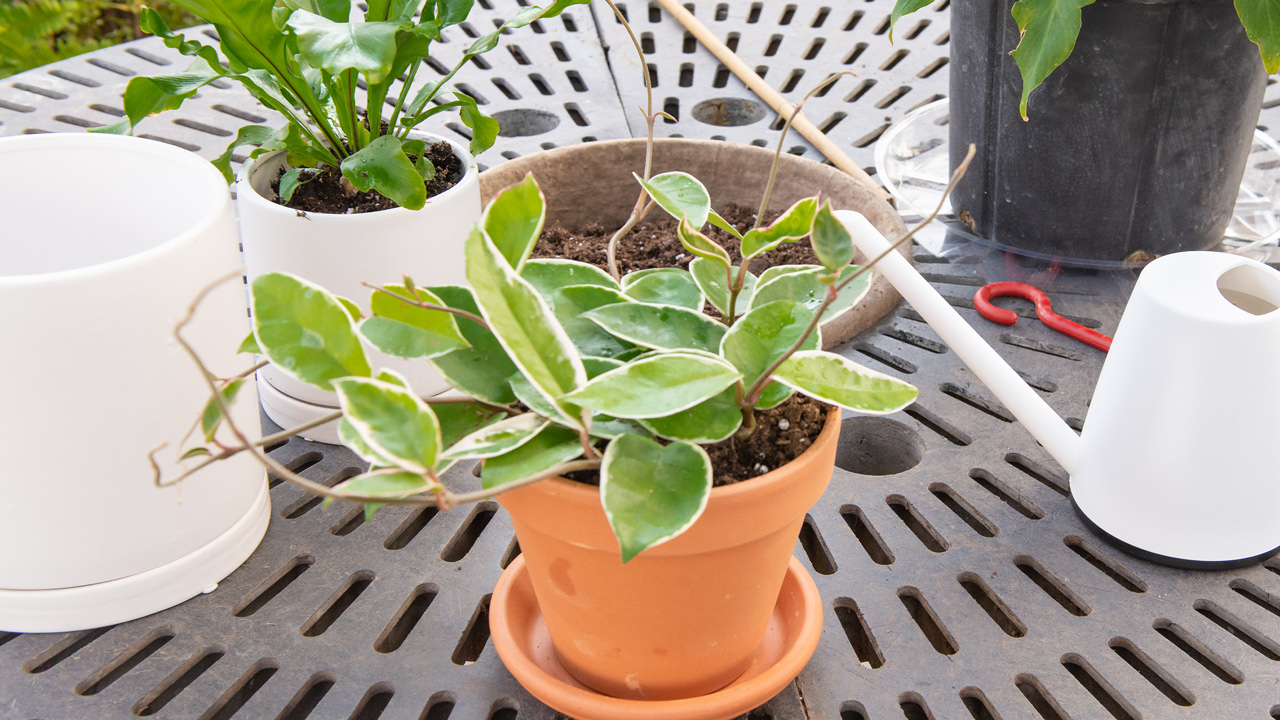
Tip #7: Let the Water Sit a Bit
Although many houseplants are pretty lenient when it comes to the water we give them, some are a little more sensitive. For example, spider plant and dracaena are not fond of the fluoride in tap water – it gives them brown tips on their foliage. And no plant appreciates a shocking splash of either icy cold or steaming hot water on its roots either. To mitigate both of these issues, fill your tub or watering can and let the water sit overnight before you use it to water your plants. As it rests, the water will come to room temperature – much more agreeable to tender root tissues – and much of the fluoride and chlorine in the water will dissipate out of the water and into the air too.
Tip #8: Avoid Softened Water
Water that’s treated with a water softener is great for our skin and hair – but not so much for houseplants. The sodium salts in softened water can collect in the potting mix over time and eventually reach concentrations that cause problems for sensitive plants. The best way to avoid this is to water your plants with non-softened water. If you have a water softener in your home, you can fill your watering cans or buckets with water from the outside tap. Or maybe your refrigerator has a reverse osmosis filtration system and you can get non-softened water from there. Or, if neither of these options are available, make sure to flush the accumulated salts out of the potting mix by watering thoroughly and letting the pot drain well each time you water.
Tip #9: Make it Easy on Yourself
If you have several plants in your collection, it can be a challenge to get everyone watered easily without a dozen trips back and forth to the sink. And watering each one in its place can lead to spills and full saucers that need to be emptied later. To make it easier, get a caddy of some sort – maybe a big rectangular wash tub or a wheeled cart. Then, you can load up your caddy with the whole crew and carry everyone to the sink in one trip.
We’re Here to Help
If these tips have you thinking about other questions for how best to take care of your houseplants – whether it’s watering, light, or anything else, just ask. We’re always here to help, and we love sharing our experiences and talking plants with each of you.

